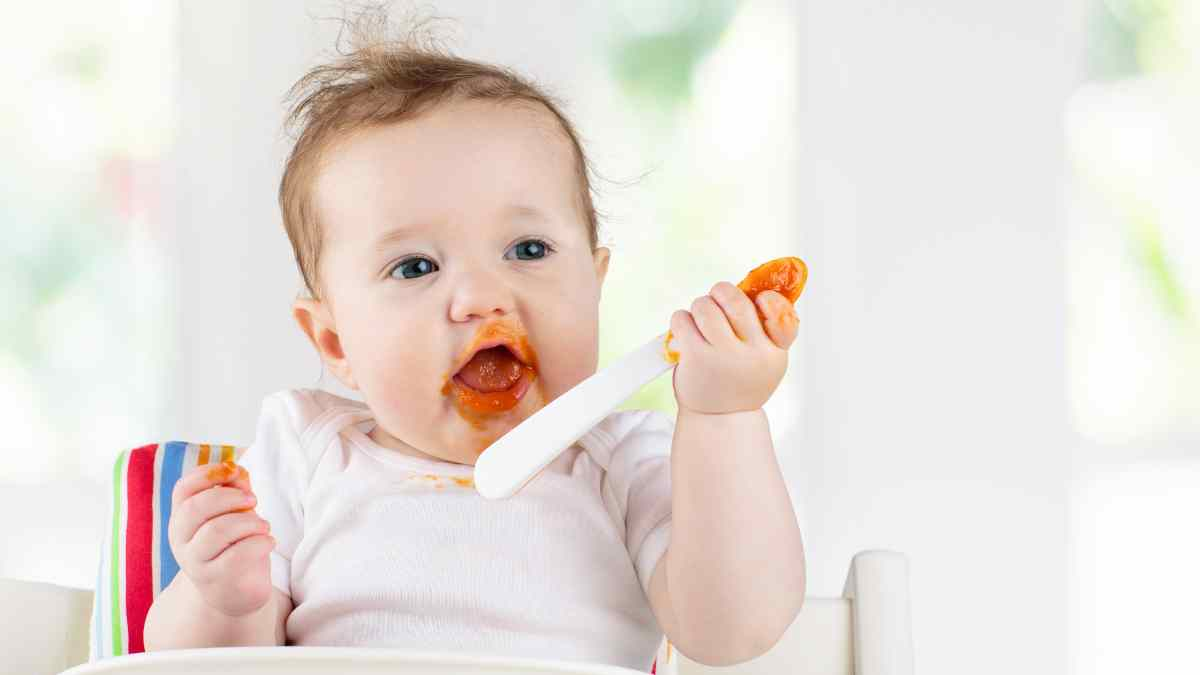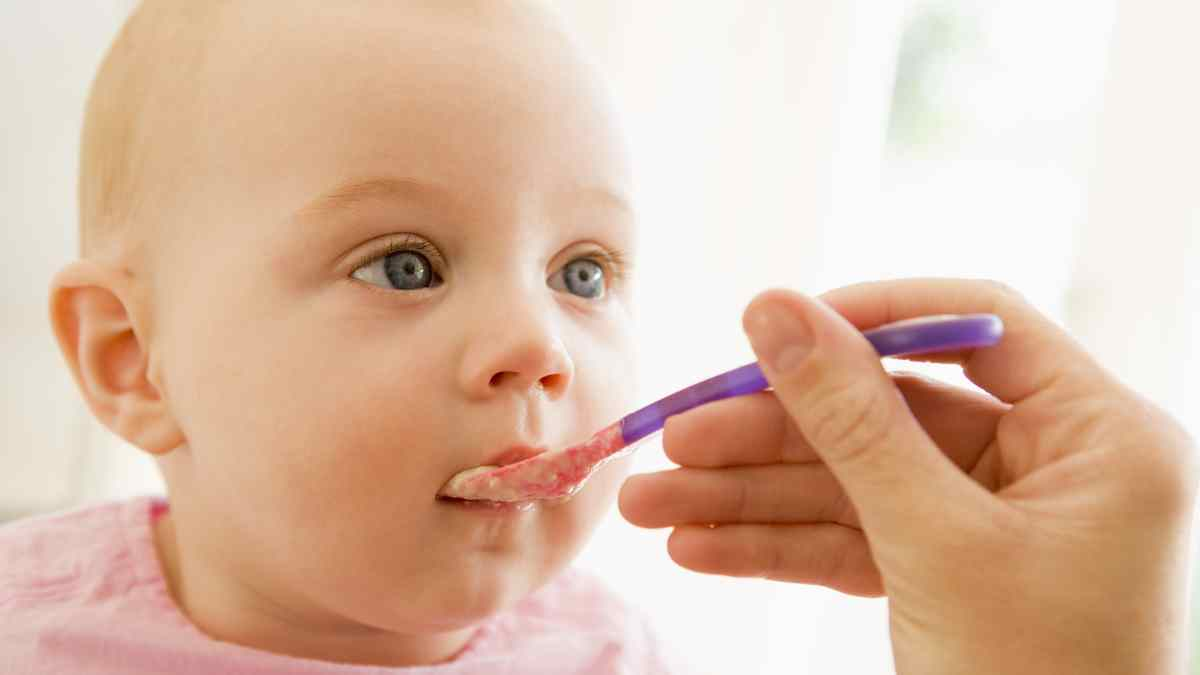When we think of hydration, a cool glass of water or perhaps a refreshing sports drink might come to mind. The importance of maintaining proper hydration for overall health is a message echoed by health experts worldwide. However, what many might not realize is that our plates, laden with fruits, vegetables, and other foods, play a pivotal role in our daily water intake.
This article delves into the intricate relationship between the solid foods we consume and our hydration levels. From the water content in juicy watermelons to the hydrating benefits of a bowl of soup, we’ll uncover how the foods we eat contribute significantly to keeping us well-hydrated. So, the next time you reach for a snack, remember: hydration isn’t just about what’s in your glass, but also what’s on your plate.

Water Contents in Foods
Introducing solid foods to a baby’s diet is a significant milestone. According to the American Academy of Pediatrics, it’s recommended to start introducing foods around 6 months of age. However, the transition from breast milk or infant formula to baby solid foods involves more than just considering food textures and potential food allergies. One crucial factor often overlooked is the water content in these new foods.
Breast milk and formula are the primary sources of hydration for babies younger than six months. As a baby grows and starts to eat more solids, the amount of breast milk or formula they consume might decrease, making the role of hydrating foods even more essential. Regular bottle feeding ensures they remain hydrated, and a good sign of this is the frequency of wet diapers. But as we introduce solid foods, it becomes vital to understand the water content in various foods to ensure babies and toddlers maintain their hydration.
Fresh fruits and vegetables are among the top hydrating foods. These are not only packed with essential nutrients but also come with an added bonus of helping with hydration. Here’s a list of some high-water-content foods suitable for babies:
- Cucumbers: Soft, cool, and almost 95% water, they can be introduced as a soft food once the baby is accustomed to eating more solids.
- Watermelon: This juicy fruit is a favorite among children and adults alike. Ensure it’s given in small pieces to prevent choking.
- Oranges: While citrus might be a concern for potential allergies, like an egg allergy or severe eczema, it’s essential to introduce new foods systematically. Offer small amounts initially and monitor for any adverse reactions.
- Bell peppers: These can be cooked to the right texture and offered in small pieces. They’re hydrating and packed with nutrients.
- Tomatoes: Soft, hydrating, and versatile, tomatoes can be introduced as a soft food. Remember to monitor for any food allergy signs.
Other foods like carrots can be cooked and mashed to a soft consistency. Yogurt, with its inherent water content, is another great option.
While it’s essential to offer hydrating foods, it’s also crucial to know when and how much water to offer directly. The American Academy of Pediatrics advises that babies younger than six months don’t need to drink water. As the baby grows and the amount of solids in their diet increases, offering water in small amounts becomes crucial. By the time they reach a year, babies can safely eat more diverse foods and drink more water regularly.
However, it’s worth noting some foods, like hot dogs, pose a choking hazard and should be given with caution. Foods with added salt or sparkling water are best avoided for young ones. Always cut food into small pieces to ensure they can safely eat and prevent choking.
As we introduce solid foods, keeping an eye on potential food allergies, like an egg allergy, and ensuring the food is of the right texture is essential. As babies transition from breast milk or formula to more solid foods, it’s crucial to monitor their hydration. Keeping in touch with your child’s doctor and reviewing systematic reviews can provide guidance on the best practices in feeding and hydration.

Benefits of Hydrating Foods for Babies and Toddlers
Building on our previous discussion about the water contents in foods, understanding the benefits of hydrating foods for babies and toddlers is crucial. As we delve deeper into the topic, we find that these foods offer more than just hydration; they bring a plethora of health benefits that contribute significantly to a child’s development and well-being.
1. Natural Nutrient Absorption
– The beauty of introducing hydrating fruits and vegetables as first foods lies in their natural nutrient profile. These healthy foods are teeming with essential vitamins and minerals. For instance, watermelon provides vitamin C and potassium, while cucumbers are a good source of vitamin K. By integrating these foods into a baby’s diet, we ensure that they receive nutrients directly from their natural sources, promoting optimal absorption and nutrition.
2. Satiety
– Hydrating foods have a unique property of promoting a feeling of fullness. The water content in these foods expands in the stomach, helping babies and toddlers feel satisfied after eating. This can be particularly beneficial as babies transition from breastmilk or infant formula to more solid foods, helping them adjust to new eating patterns and preventing overeating.
3. Digestion and Metabolism
– Water plays a pivotal role in digestion. Foods like carrots, when cooked and mashed, or fruits like melons, facilitate smoother digestion. The inherent water content in these foods aids in breaking down solids, ensuring that nutrients are efficiently absorbed. This, in turn, boosts metabolism and ensures that babies derive maximum energy from the foods they consume.
4. Skin Health
– A well-hydrated body reflects in the skin’s health. The benefits of hydration for skin elasticity and glow are well-documented. By incorporating hydrating foods, we not only nourish the insides but also contribute to soft, supple, and radiant skin, which is essential for protecting babies from external irritants.
While drinking water becomes more integral as a child grows, the role of hydrating foods cannot be undermined. Especially during the initial months of introducing solids, around 6 months of age, these foods can significantly contribute to the daily water intake, reducing the need for extra water. It also ensures that the baby gets a well-rounded diet, rich in both nutrients and hydration.
However, as always, moderation is key. It’s essential to strike a balance in what’s offered to ensure holistic development. Regular check-ins with your child’s doctor can offer insights into any specific dietary needs or adjustments required based on weight, age, and development milestones.

Considerations and Misconceptions
As we continue our exploration into the role of hydrating foods in a baby’s diet, it’s essential to address some common misconceptions and considerations surrounding hydration. Navigating the world of infant nutrition is a challenging task for many parents, and understanding the nuances of hydration can make this journey smoother.
- Factors Affecting Hydration Needs
- Physical Activity: Just like adults, babies’ hydration needs vary with their activity levels. An active baby who’s starting to crawl or walk will require more fluids than a more sedentary one.
- Environment: Babies living in hotter climates or during summer months may need additional fluids to compensate for the water loss through sweat.
- Health Conditions: Certain health conditions or illnesses, especially those accompanied by fever, vomiting, or diarrhea, can increase a baby’s hydration requirements. In such cases, it’s crucial to consult with a child’s doctor for specific guidelines.
- Potential Dangers of Overhydration
- While ensuring babies get enough fluids is vital, there’s also a risk of overhydration. Offering too much water, especially before six months of age, can dilute the sodium in a baby’s body. This can lead to a condition known as water intoxication or water toxicity, which can be severe.
- It’s essential to remember that breastmilk or infant formula should be the primary source of hydration for babies under six months. They contain the perfect balance of nutrients and hydration suited for a baby’s needs. Offering additional water or diluting the formula can disrupt this balance.
- For older babies who’ve started on solid food, while hydrating foods like fruit can be beneficial, it’s essential to monitor the total fluid intake, including drink water, milk, and other beverages. Moderation, as always, is crucial.
Building on the foundation of our previous discussions on water content in foods and the benefits of hydrating foods, this segment aims to provide a well-rounded perspective. It’s not just about introducing the right first foods or ensuring the baby is consuming enough solid food; it’s about striking a balance. Ensuring babies receive the nutrition they need, from sources like breastmilk, meat, eggs, and fish, while also getting the right amount of hydration, is pivotal to their overall health and development.

Conclusion
The journey of introducing solids, especially around the pivotal 6 months of age milestone, is one filled with excitement and challenges. As parents and caregivers, understanding the nuances of hydration can significantly impact a child’s overall development. From the first foods we choose, like soft fruits and vegetables, to the way we monitor their daily water intake, every step can shape their nutrition and health.
It’s imperative to remember that while foods can be a source of hydration, breastmilk and infant formula remain paramount for babies, especially in the initial months. As they grow, their dietary landscape expands, incorporating more solids and different food textures. This progression should be complemented with an understanding of their evolving hydration needs.
In essence, hydration in babies is a dance between the foods they eat, the fluids they drink, and their ever-changing developmental needs. As they take their first steps into the world of eating, let’s ensure they are well-hydrated, well-nourished, and set on a path of holistic health and well-being.
Did this article help you? Please leave a comment below. If you have any question, don’t hesitate to ask.



